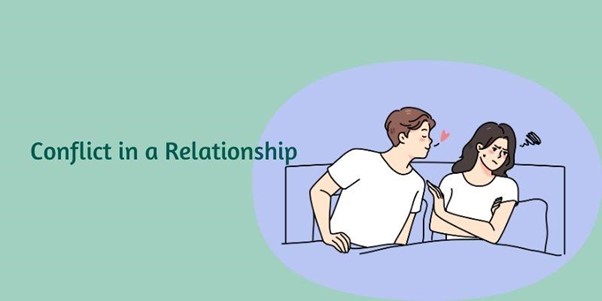
Relationship Conflict: Definition, Causes, Symptoms, Examples, & How to Resolve It?
While it can be uncomfortable and emotionally draining, conflict isn’t always bad. It often signals that something important needs attention or change.
The key lies in how conflicts are handled! They can strengthen bonds and improve understanding when addressed properly. If left unchecked, they can lead to misunderstandings, resentment, or even the breakdown of a relationship.
Every relationship involves individuals with their own thoughts, feelings, and needs. Naturally, differences arise, and those differences can lead to disagreements.
The good news is that conflict can become a powerful tool for growth when approached with patience and respect.
It provides an opportunity to clarify expectations, communicate openly, and find solutions for both parties.
This blog will explore the nature of relationship conflict, its common causes, and practical strategies for handling it effectively.
Whether navigating small disagreements or working through more significant challenges, understanding how to manage conflict can transform how you interact with others.
Remember, it’s not about avoiding conflict altogether—it’s about learning how to turn those moments into opportunities for connection, trust, and mutual understanding. Let’s dive in!
What Is Relationship Conflict?
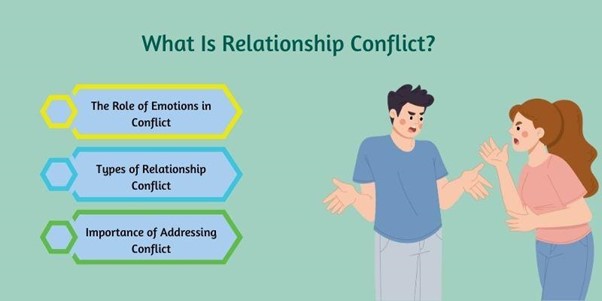
Relationship conflict refers to disagreements, misunderstandings, or tensions between individuals. It surfaces when people have differing needs, perspectives, or expectations.
Conflict is a natural part of human interactions, whether the relationship is romantic, familial, or professional.
The Role of Emotions in Conflict
Emotions like frustration, anger, and disappointment often play a key role in escalating conflicts.
For instance, when someone feels misunderstood or dismissed, their emotional response can quickly intensify the situation.
This is where the concept of the “amygdala hijack” comes into play.
The amygdala, a part of the brain responsible for processing emotions, can override rational thinking during heightened emotional stress.
This can lead to impulsive reactions, such as yelling or withdrawing, which delay productive communication and resolution.
Types of Relationship Conflict
Conflicts can take many forms, including:
- Communication conflict: Related to misunderstandings or misinterpretations.
- Emotional conflict: Related to unmet emotional needs or unresolved feelings.
- Value conflict: Occurs when personal values or beliefs clash.
- External conflict: Influenced by outside stressors, like finances or work-related issues.
Understanding these types helps individuals identify the root of their conflicts, making it easier to address them effectively.
Importance of Addressing Conflict
Ignoring conflict doesn’t make it disappear. It creates a cycle of resentment and disconnection.
Addressing conflicts constructively strengthens trust, encourages open communication, and promotes mutual understanding.
Resolving issues also prevents small disagreements from evolving into larger, more damaging problems. By tackling conflicts head-on, relationships can grow stronger, healthier, and more fulfilling.
Causes of Conflict in Relationships
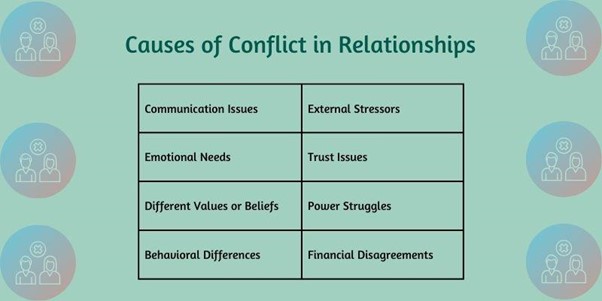
Conflict in relationships often arises from a combination of internal and external factors. Each relationship is unique, but certain patterns are common causes of tension and disagreement.
Understanding these causes is the first step in managing and resolving conflicts effectively.
Below, we explore the most common sources of conflict and their impact on relationships.
1. Communication Issues
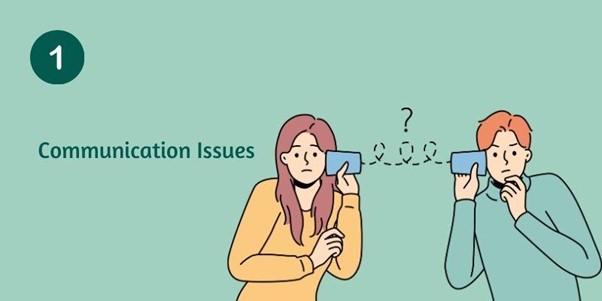
Poor communication is one of the most frequent causes of relationship conflict. Misunderstandings, unclear expectations, or a lack of active listening can lead to frustration and resentment.
For example, one partner may feel unheard or dismissed if the other fails to validate their perspective.
Misinterpreted messages, such as a text read with the wrong tone, can escalate simple issues into full-blown arguments.
2. Emotional Needs

Conflict is almost unavoidable when emotional needs like affection, validation, or support go unmet.
One partner may feel neglected if the other is emotionally distant, leading to feelings of inadequacy or frustration.
These unmet needs are caused by different emotional expectations, where one person seeks intimacy, and the other prioritizes independence.
3. Different Values or Beliefs
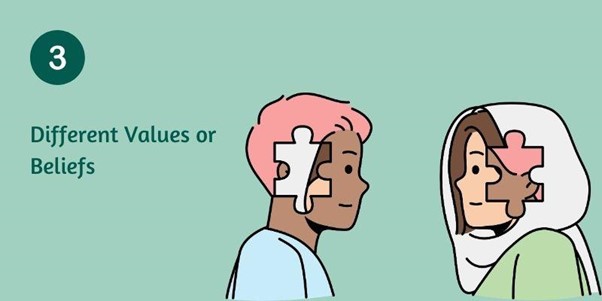
Differing core values, cultural beliefs, or life goals can create significant challenges. For instance, one partner may value financial security, while the other prioritizes adventurous living.
Clashes over parenting styles, religion, or political beliefs often create tension, especially when neither party is willing to compromise or respect the other’s perspective.
4. Behavioral Differences
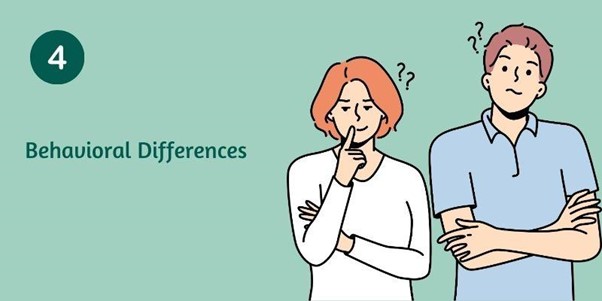
Contrasting personalities and habits can lead to conflict. For example, an organized, detail-oriented partner may feel frustrated by a spontaneous, carefree partner.
These differences can result in disagreements over household chores, punctuality, or lifestyle choices.
Such contrasts can become sources of ongoing conflict without mutual understanding and adaptability.
5. External Stressors
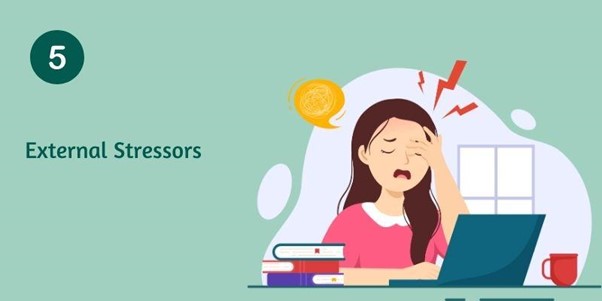
Outside pressures, such as work deadlines, family obligations, or financial difficulties, can destroy relationships. These stressors may reduce patience and enhance existing tensions.
For example, a partner stressed about job performance might unintentionally vent their frustrations on the other, leading to unnecessary arguments.
6. Trust Issues
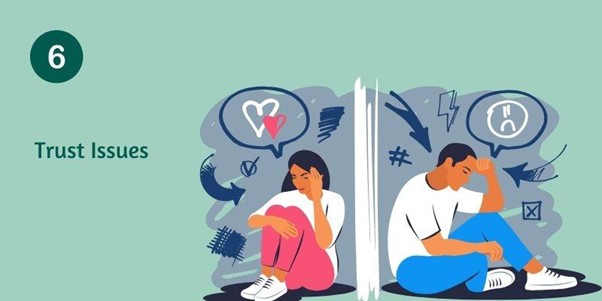
Trust is the foundation of healthy relationships. Its absence can lead to conflict. Betrayals like infidelity, dishonesty, or broken promises can damage trust, causing suspicion and insecurity.
Even a perceived lack of transparency, such as hiding finances, can create doubt and lead to arguments.
7. Power Struggles
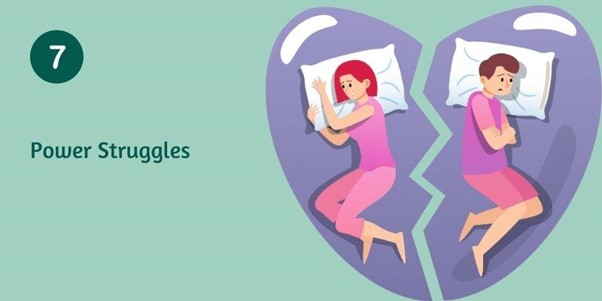
Disputes over control and authority in a relationship can result in ongoing tension. For instance, one partner may feel undermined if the other consistently makes decisions without consulting them.
Power struggles often result from insecurity or the desire to assert dominance, creating an imbalance that erodes partnership dynamics.
8. Financial Disagreements
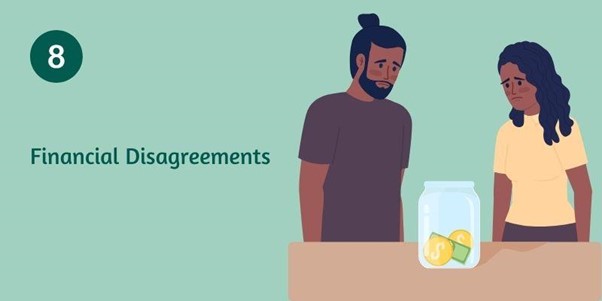
Money is a common source of relationship conflict. Differences in spending habits, saving priorities, or financial goals can cause disputes.
For example, one partner may prioritize saving for the future, while the other prefers spending on present comforts.
If left unresolved, these disagreements can strain the relationship and create feelings of inequality or frustration.
By identifying and addressing these root causes, partners can better navigate conflicts, fostering stronger and more harmonious relationships.
Signs and Symptoms of Relationship Conflict
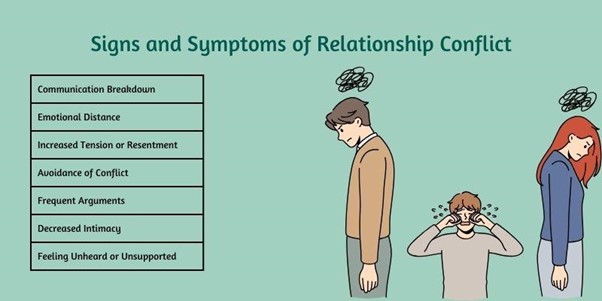
Recognizing the signs and symptoms of relationship conflict is crucial for addressing issues before they escalate. Conflicts can evolve in subtle ways or become obvious through recurring arguments.
Awareness of these symptoms allows partners to identify areas of concern and work toward resolving them constructively.
Below are key indicators of conflict within a relationship, explained in detail.
1. Communication Breakdown
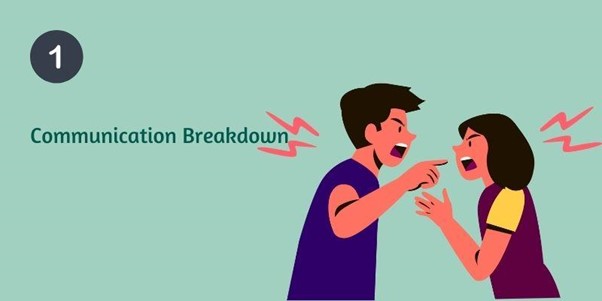
One of the first signs of conflict is a communication breakdown. Partners may stop sharing their thoughts or feelings, leading to misunderstandings and unresolved issues.
Frequent misinterpretations of intentions or words can create unnecessary arguments.
For instance, couples may resort to defensive or dismissive responses instead of meaningful discussions, exacerbating the conflict.
2. Emotional Distance
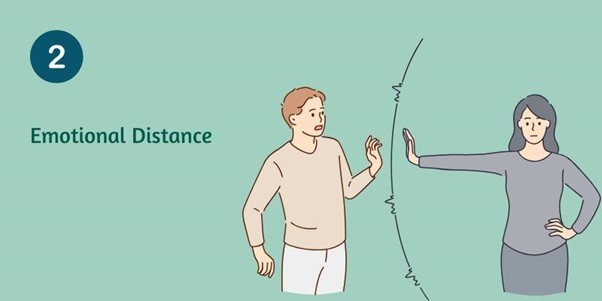
When conflict persists, emotional withdrawal often follows. One or both partners may become less responsive, distant, or uninterested in connecting emotionally.
This detachment can leave individuals feeling isolated and unimportant, creating a gap in the relationship that is difficult to bridge without open dialogue.
3. Increased Tension or Resentment
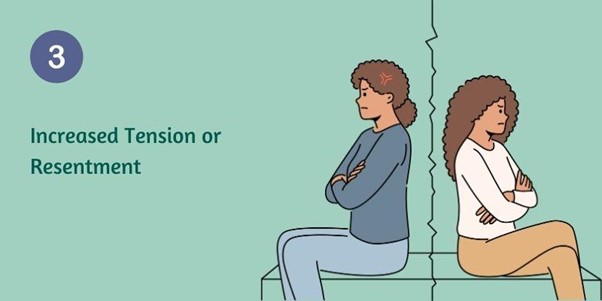
Unresolved conflicts often build tension within a relationship. This tension can lead to lingering resentment, where one or both partners hold grudges over past disagreements.
Even small irritations can spark larger arguments as the underlying frustration compounds over time.
4. Avoidance of Conflict
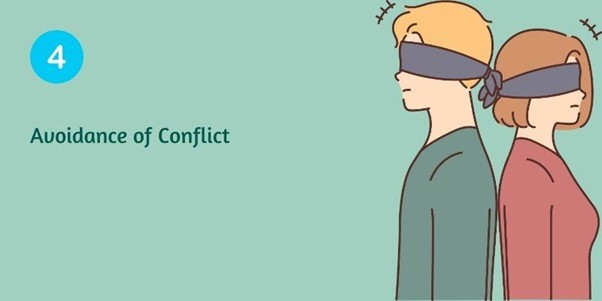
While it may seem like avoiding conflict is a peaceful approach, it often results in unresolved issues festering beneath the surface.
Ignoring problems or “sweeping them under the rug” can lead to bigger problems later.
For example, minor, unaddressed disagreements may accumulate, eventually leading to explosive confrontations.
5. Frequent Arguments
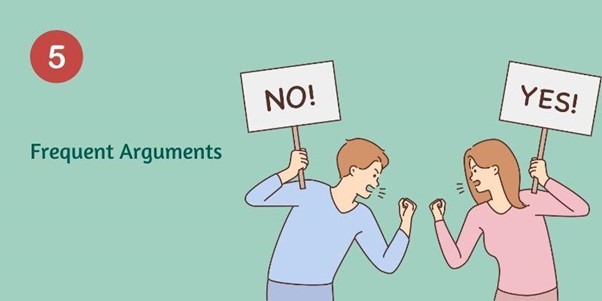
Recurring arguments about the same issues are a clear symptom of relationship conflict.
These arguments may stem from unaddressed underlying issues, such as unmet expectations or differing priorities.
Partners may feel stuck in a cycle of blame and frustration without an effective resolution.
6. Decreased Intimacy
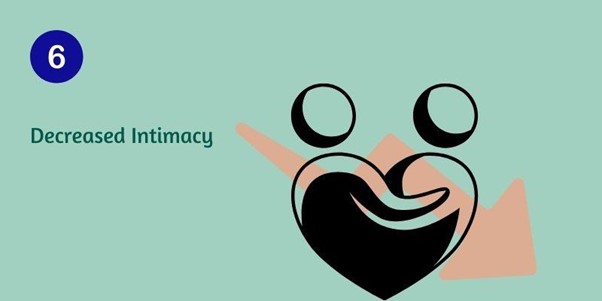
Conflict often leads to a decline in both physical and emotional intimacy.
Partners may feel disconnected, resulting in reduced affection, lack of closeness, or reluctance to engage in meaningful interactions. This distance can make it harder to repair the relationship over time.
7. Feeling Unheard or Unsupported
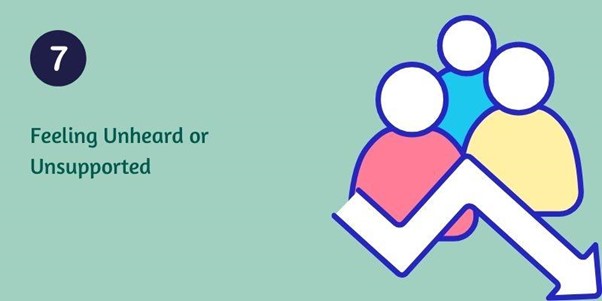
One of the most painful signs of conflict is feeling invalidated or unsupported.
When one partner constantly feels ignored or dismissed, it creates a sense of imbalance in the relationship. Over time, this can erode trust and lead to feelings of inadequacy or neglect.
By identifying these symptoms early, partners can take steps to address the root causes of conflict, promoting healthier communication and stronger emotional bonds.
Recognizing and addressing these signs can prevent further strain on the relationship and facilitate growth and understanding.
Example of a Relationship Conflict
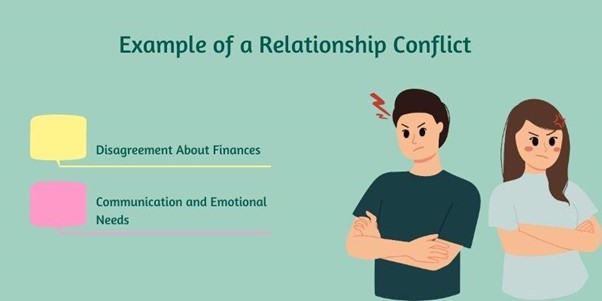
Relationship conflicts often stem from differing perspectives, priorities, or emotional needs.
Exploring real-life examples can make these scenarios relatable, providing readers with a tangible understanding of how conflicts arise and how they might be addressed.
Below are two common examples of relationship conflict.
Scenario 1: Disagreement About Finances
Finances are a frequent source of tension in relationships. Imagine a couple, Alex and Jamie, who have differing financial priorities.
Alex values saving for the future and prefers to invest in long-term goals like buying a home or building an emergency fund.
On the other hand, Jamie believes in enjoying life in the present and often spends money on dining out, travel, or hobbies.
This difference creates frequent arguments. Alex feels Jamie is irresponsible with money and worries about financial stability.
In contrast, Jamie feels Alex is overly controlling and unwilling to enjoy life. Their inability to find common ground leads to resentment.
To resolve this conflict, Alex and Jamie might benefit from open communication, where they share their financial goals and fears without judgment.
By creating a joint budget that allocates funds for savings and discretionary spending, they could balance their priorities and reduce tension.
Scenario 2: Communication and Emotional Needs
Another example involves communication breakdowns. Consider Mia and Ryan, a couple struggling with unmet emotional needs.
Mia often feels neglected because Ryan is less expressive about his feelings. She wishes he would initiate more conversations and share his thoughts.
On the other hand, Ryan feels overwhelmed by Mia’s constant need for reassurance and interprets it as criticism.
Their differing communication styles lead to frequent arguments. Mia accuses Ryan of being emotionally distant, while Ryan withdraws further to avoid conflict, creating a cycle of frustration and misunderstanding.
To address this conflict, Mia and Ryan could explore ways to meet each other’s emotional needs.
Mia could express her feelings calmly without blame, while Ryan could try to engage in more meaningful conversations.
Couples counseling also helps them understand each other’s communication styles and build a stronger connection.
These examples highlight how common conflicts can arise and show the importance of mutual understanding, compromise, and effective communication in resolving relationship challenges.
Impact of Unresolved Conflict on a Relationship
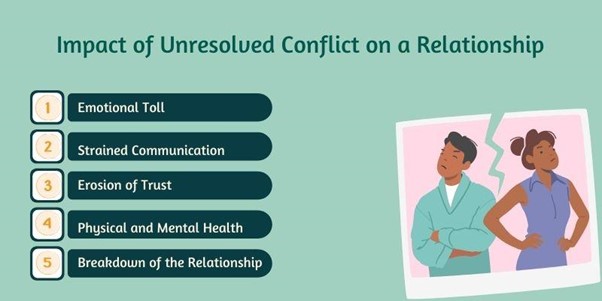
Conflict is a natural part of any relationship, but unresolved disagreements can have serious consequences.
Unresolved conflict doesn’t simply disappear; instead, it often festers, creating a toxic dynamic that undermines the relationship’s foundation.
Addressing conflicts in a healthy, constructive way is essential to maintaining trust, communication, and emotional well-being. Below are some significant impacts of unresolved conflict:
1. Emotional Toll
Unresolved conflict creates an emotional burden that weighs heavily on both partners.
Over time, frustration, anger, and resentment can build up, making it harder to feel emotionally connected.
This emotional toll can result in burnout, where individuals feel too drained to invest in the relationship, leading to long-term dissatisfaction and unhappiness.
2. Strained Communication
As conflicts pile up without resolution, communication often becomes tense and guarded.
Partners may avoid discussing sensitive topics out of fear of sparking an argument, leading to a lack of openness.
Over time, this communication breakdown can create a distance between partners, making it even harder to resolve future disagreements.
3. Erosion of Trust
Unresolved conflict chips away the trust among partners. When one or both partners feel unheard or invalidated, they may question the other’s commitment or reliability.
Over time, the lack of resolution creates a cycle of distrust, further damaging the relationship.
4. Physical and Mental Health
The stress caused by chronic conflict can spill over into physical and mental well-being. Constant arguments and tension can contribute to anxiety, depression, and sleep disturbances.
Physical symptoms like headaches, high blood pressure, and weakened immunity may also arise, creating a vicious cycle of stress that affects overall health.
6. Breakdown of the Relationship
In extreme cases, unresolved conflicts can lead to the deterioration of the relationship itself.
The inability to address issues creates an environment of frustration and unhappiness, making separation or a breakup seem like the only viable solution.
Whether in a romantic, familial, or professional relationship, unresolved conflict leads to break ups.
Understanding these potential consequences highlights the importance of addressing and resolving conflicts proactively.
How to Resolve Conflict in a Relationship
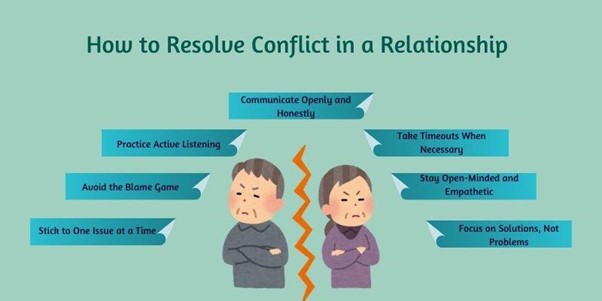
How conflicts are handled can determine whether the relationship grows stronger or weaker. Resolving conflict effectively requires communication skills, empathy, and patience.
By addressing disagreements constructively, partners can create a foundation of mutual respect and understanding. Below are key strategies for resolving conflict in a relationship.
1. Communicate Openly and Honestly
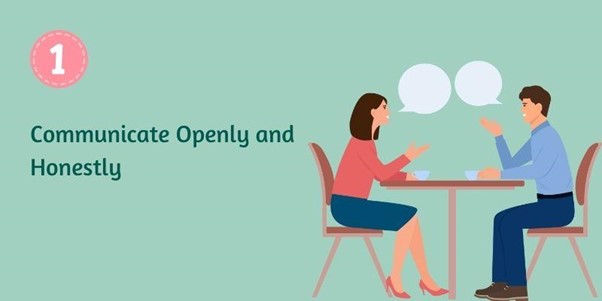
Open and honest communication is the basis of resolving conflict. Sharing your thoughts and feelings without fear of judgment promotes trust. It creates an environment where issues can be addressed constructively.
One effective method is using “I” statements, which allow you to express how a situation makes you feel without placing blame.
For instance, instead of saying, “You never listen to me,” try saying, “I feel unheard when I don’t get a chance to express my thoughts.” This approach reduces defensiveness and focuses on resolving the issue rather than assigning fault.
Timing and tone are crucial when initiating difficult conversations. Choose a moment when both partners are calm and use a caring, non-confrontational tone.
Starting with phrases like, “Can we talk about something that’s been on my mind?” can help set a positive tone for the discussion.
By prioritizing open and honest communication, couples can tackle conflicts head-on, creating opportunities for deeper understanding and connection.
2. Practice Active Listening
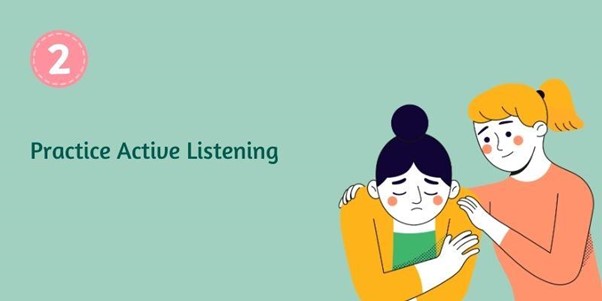
Active listening is giving your partner your full attention and genuinely understanding their perspective. It requires setting aside distractions, making eye contact, and being fully present in the moment.
To practice active listening, avoid interrupting your partner while they speak. Instead, focus on their words and emotions and paraphrase what they’ve said to show understanding.
For example, “So you’re saying you feel overwhelmed because I haven’t been helping with chores as much lately?” This demonstrates that you’re paying attention and care about their feelings.
Validation is another key aspect of active listening. Acknowledge your partner’s emotions with statements like, “I can see why that would upset you,” or “I understand how you feel.”
This doesn’t mean you must agree with everything, but showing empathy helps reduce tension and fosters collaboration.
3. Avoid the Blame Game
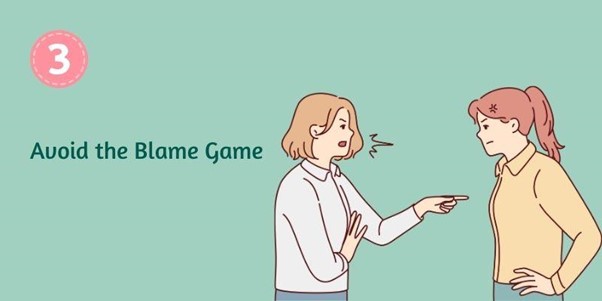
Assigning blame during a conflict can quickly escalate tensions and create a cycle of defensiveness.
When one partner feels attacked, they are less likely to engage constructively, and the focus shifts from resolving the issue to protecting themselves.
For example, instead of saying, “You always ignore my feelings,” try rephrasing it as a constructive request, such as, “I’d appreciate it if we could discuss how I’m feeling about this situation.” This approach keeps the tone neutral and fosters collaboration instead of opposition.
Shifting from blame to understanding requires empathy and a willingness to focus on solutions.
Avoid words like “always” or “never,” which exaggerate issues and can make your partner feel unfairly criticized. Instead, concentrate on the present issue and how it can be addressed together.
By avoiding blame, you create a space where both partners feel safe to express themselves and work toward resolution.
4. Stick to One Issue at a Time

Conflicts can spiral out of control when multiple issues are raised in a single argument. Recalling past grievances or unrelated problems can overwhelm both partners, making resolution feel impossible.
To stay focused, identify the primary issue and commit to addressing it before moving on to others.
For instance, if the disagreement concerns spending habits, avoid shifting the conversation to unrelated topics like household chores. This clarity prevents confusion and keeps the discussion productive.
Using statements like, “Let’s focus on this issue for now, and we can discuss the other things later,” can help redirect the conversation. If additional concerns arise, jot them down to address separately later.
By sticking to one issue at a time, couples can tackle conflicts more effectively without letting emotions spiral out of control.
5. Take Timeouts When Necessary

Emotions can run high in the heat of an argument, leading to unproductive or hurtful exchanges. Taking a timeout allows both partners to cool down, reflect, and approach the conversation with a clearer mindset.
A timeout doesn’t mean avoiding the issue—it’s a temporary pause to prevent escalation.
Agree on a specific break duration, such as 20–30 minutes, and commit to revisiting the topic afterward.
During the break, engage in calming activities like deep breathing, a short walk, or journaling to regain emotional balance.
For example, one partner might say, “I’m feeling too upset to talk about this right now. Let’s take a break and come back to it in half an hour.” This approach shows a commitment to resolving the issue while prioritizing emotional regulation.
Taking timeouts prevents arguments from spiraling and demonstrates respect for each other’s emotional well-being.
When both partners return to the conversation with a calmer mindset, they are better equipped to resolve the conflict constructively.
6. Stay Open-Minded and Empathetic
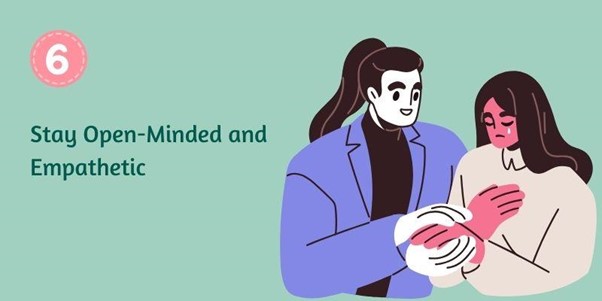
Understanding your partner’s perspective is key to resolving conflicts constructively. Staying open-minded means approaching the conversation with curiosity rather than judgment.
Empathy, in turn, fosters connection by showing your partner that their feelings and experiences are valid.
For example, if your partner expresses frustration about feeling unheard, respond with, “I understand how that could feel upsetting.
Can you help me understand what I can do differently?”
This approach shifts the focus from defending yourself to addressing their needs.
Empathy also involves recognizing that your partner’s perspective is shaped by their unique experiences, values, and emotions.
By putting yourself in their shoes, you can uncover underlying issues that might not be immediately obvious.
When both partners practice empathy, they create an environment where solutions feel collaborative rather than one-sided, leading to healthier and more effective communication.
7. Focus on Solutions, Not Problems
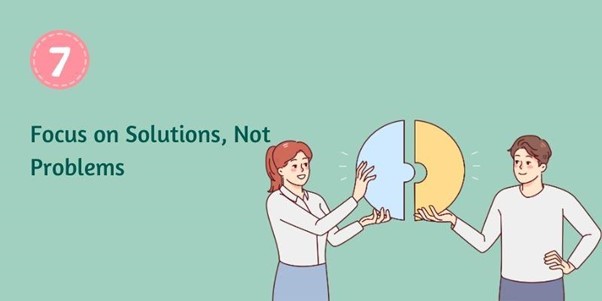
When conflicts arise, dwelling on the problem is easier than finding a way forward. Instead, shift the focus toward solutions by working together as a team.
This collaborative mindset transforms the conflict into an opportunity for growth.
For instance, if one partner feels overwhelmed by household responsibilities, brainstorm ways to share the workload more equitably.
Discuss ideas openly, such as creating a chore schedule or outsourcing certain tasks. Collaborative problem-solving ensures that both partners feel heard and invested in the resolution.
Using language like, “What can we do to make this better for both of us?” encourages cooperation and reduces the adversarial tone.
By prioritizing solutions over blame, you demonstrate a shared commitment to improving the relationship, fostering trust, and strengthening your bond.
Additional Conflict Resolution Tips
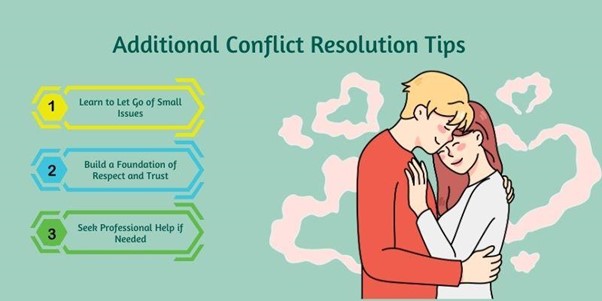
Effective conflict resolution often requires more than just communication and empathy. Some additional strategies and practices can enhance how you handle conflicts in a relationship.
These tips focus on managing smaller issues, building a stronger foundation, and seeking professional help when necessary.
Incorporating these strategies can reduce the frequency of conflicts and help maintain a positive, healthy dynamic in relationships.
1. Learn to Let Go of Small Issues
In relationships, not every disagreement needs to be a battle. “Choosing your battles” emphasizes recognizing when it’s better to let go of minor issues rather than escalating them.
Constantly addressing every small frustration can create unnecessary tension and drain emotional energy.
Evaluate each conflict before addressing it. Ask yourself, “Is this issue significant enough to affect our relationship long-term?” If the answer is no, let it go.
For example, if your partner occasionally forgets to take out the trash or leaves dishes in the sink, is it worth creating tension over, or can you overlook it in the spirit of harmony?
Letting go of small issues fosters a more peaceful relationship and allows for a deeper focus on the issues that truly matter.
2. Build a Foundation of Respect and Trust
Respect and trust are the cornerstones of any successful relationship, especially regarding conflict resolution.
When both partners respect each other’s feelings, perspectives, and autonomy, discussing issues openly and working toward solutions becomes much easier.
To build this foundation, practice daily behaviors that reinforce mutual respect, such as showing appreciation, giving compliments, and being mindful of each other’s boundaries.
It is equally important to avoid harmful actions like name-calling or disrespectful language during conflicts. These negative behaviors only erode trust and make it more difficult to resolve conflicts constructively.
Building trust involves being reliable, keeping promises, and communicating honestly.
When both partners trust each other, they feel safer sharing their concerns, knowing they’ll be heard and understood without judgment.
3. Seek Professional Help if Needed
Sometimes, despite your best efforts, conflicts can become too challenging to resolve independently. In these cases, relationship counseling or mediation can be incredibly helpful.
A trained professional can provide guidance, help identify unhealthy patterns, and offer techniques for improving communication and resolving disagreements.
When seeking a qualified counselor, look for someone specializing in relationship therapy or couples counseling.
It’s important to feel comfortable with the therapist and trust their approach. You can ask for recommendations from friends or look for certified professionals through online platforms.
Couples counseling can help you gain insight into each other’s perspectives, facilitate productive conversations, and develop stronger conflict-resolution skills.
If conflicts in your relationship are deeply rooted or recurring, professional help can be a valuable step in moving forward together.
3 Steps to Prevent Future Conflicts
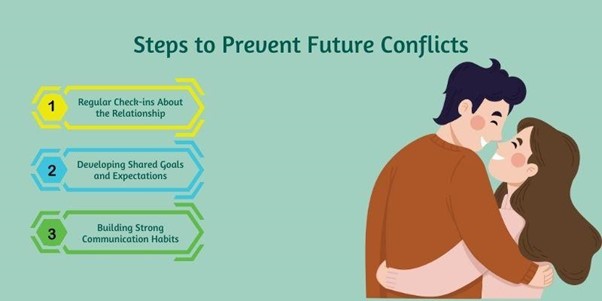
Preventing future conflicts in a relationship requires proactive strategies that foster understanding, communication, and shared goals.
Couples can build a strong foundation for a harmonious relationship by implementing consistent practices and addressing potential issues before they escalate.
Here are some steps to minimize conflicts and strengthen your connection.
1. Regular Check-ins About the Relationship
Regularly discussing the state of your relationship helps both partners stay in tune with each other’s feelings and concerns.
Scheduling weekly or monthly check-ins can provide a safe space to express emotions and address any issues before they grow.
This keeps misunderstandings from lingering and ensures both individuals feel heard and valued.
2. Developing Shared Goals and Expectations
When both partners share common goals and align on major life decisions, it creates a sense of unity and purpose.
Whether it’s about career plans, family dynamics, or financial goals, having clear expectations helps prevent unnecessary disagreements.
Make sure to have open conversations about what you each want out of life and ensure you are on the same page.
3. Building Strong Communication Habits
Communication is key to resolving and preventing conflict. Strong communication habits, like being open, honest, and attentive, create a healthy environment where issues can be addressed early.
Regularly practicing active listening, using “I” statements, and being patient with one another helps minimize the chance of miscommunication and emotional triggers.
By incorporating these proactive steps into your relationship, you can avoid unnecessary conflicts and create a more supportive, understanding partnership.
Conclusion
Addressing relationship conflict is essential for maintaining a healthy and fulfilling partnership.
Recognizing the signs of unresolved conflict such as communication breakdowns, emotional distance, and frequent arguments, can help prevent further strain.
It’s important to remember that conflict is a natural part of any relationship. When managed constructively, it can lead to growth and deeper understanding between partners.
Rather than viewing conflict as something to fear or avoid, consider it an opportunity to strengthen your relationship.
Conflict resolution allows both individuals to express their needs, understand each other’s perspectives, and find solutions together.
By practicing open communication, empathy, and patience, you can transform conflicts into learning experiences that improve the dynamic between you and your partner.
If conflicts feel overwhelming, don’t hesitate to seek professional help, such as relationship counseling, to guide you through more challenging issues.
Taking proactive steps, like regular check-ins and setting shared goals, can also help prevent future disagreements.
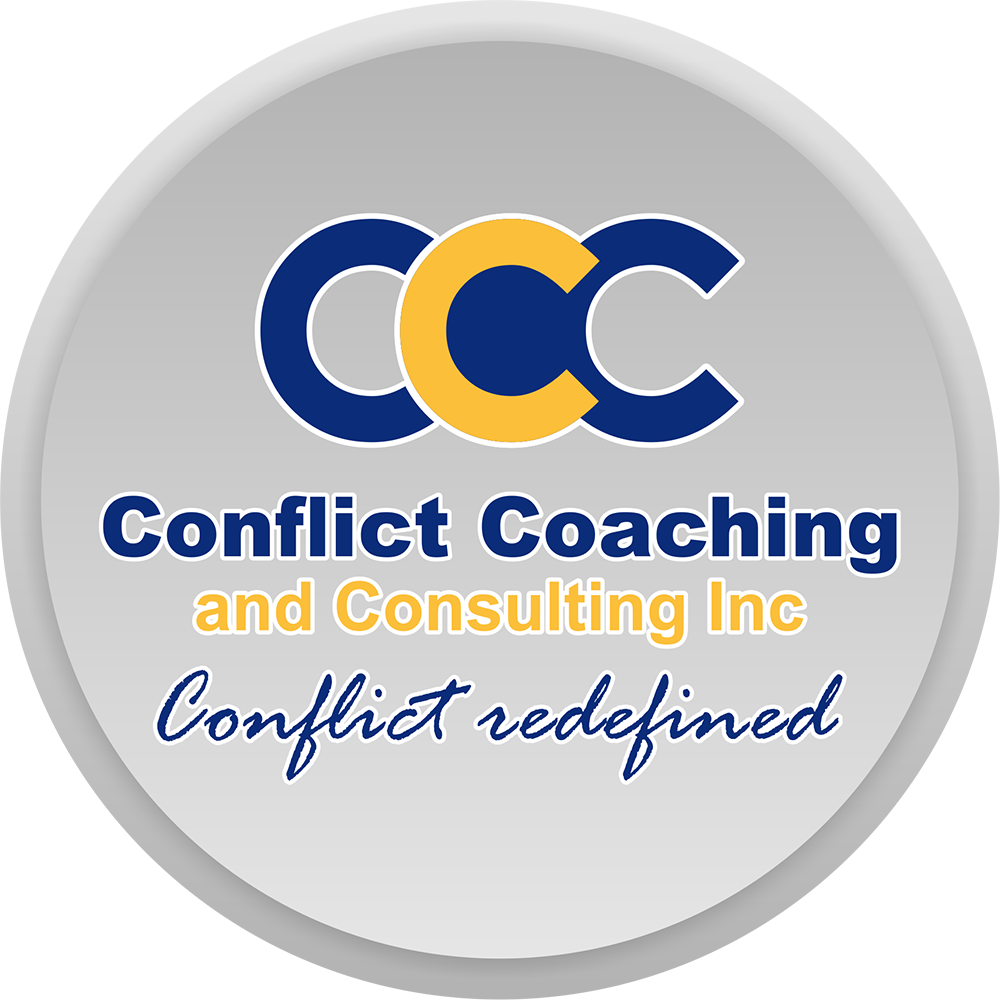


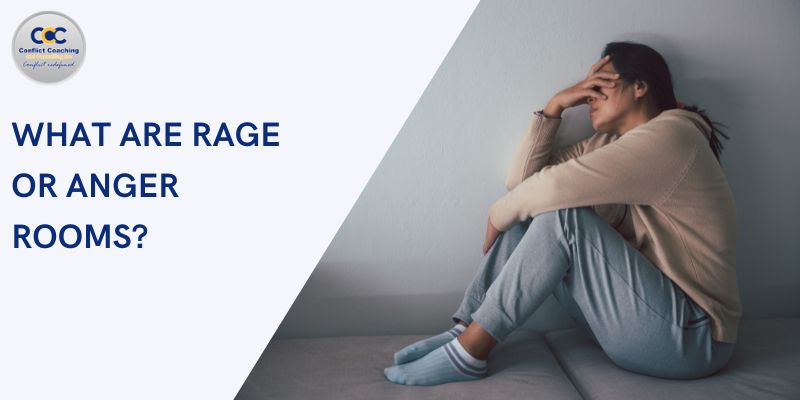
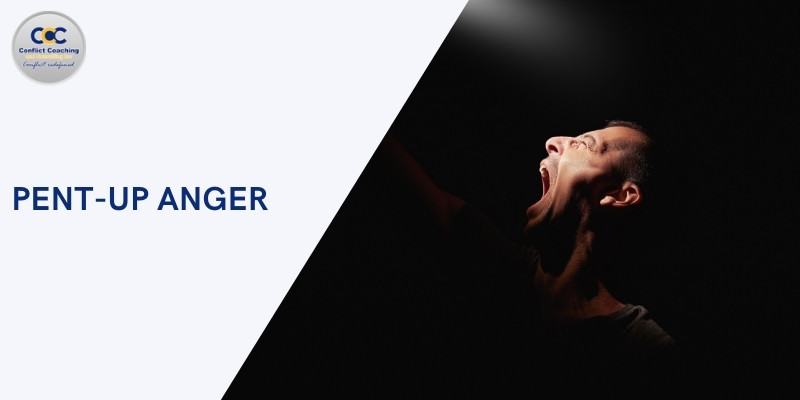
Responses